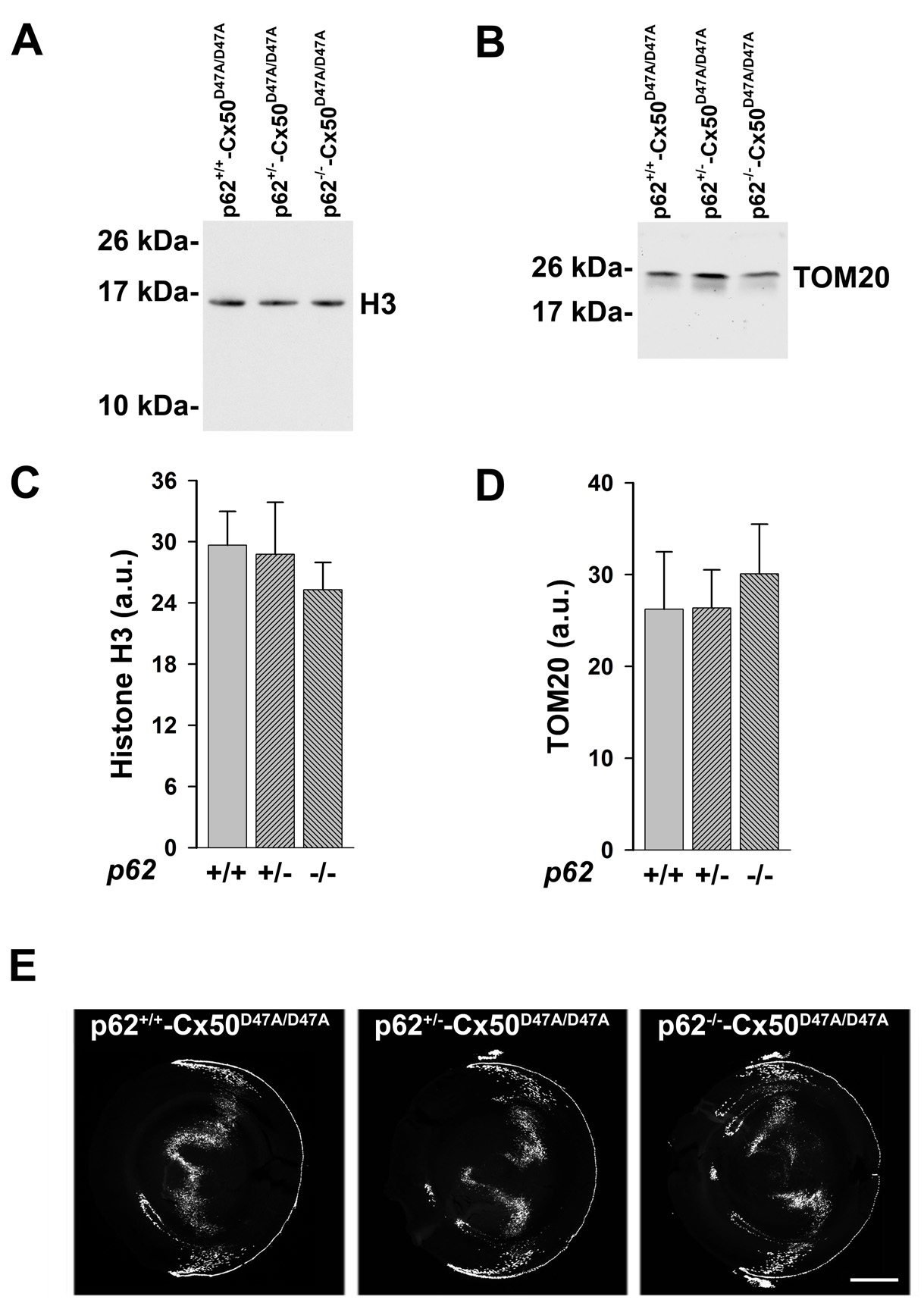Figure 5. Deletion of p62 in homozygous Cx50D47A lenses does not affect levels of nuclear and mitochondrial proteins or affect their impaired denucleation.
A, B: Immunoblots of histone H3 (H3; A) and mitochondrial import receptor subunit TOM20 homolog (TOM20; B) in lens homogenates prepared from 1-month-old Cx50D47A homozygotes that were wild-type for p62 (p62+/+-Cx50D47A/D47A) or heterozygous (p62+/−-Cx50D47A/D47A) or homozygous (p62−/−-Cx50D47A/D47A) p62 null. The migration positions of the molecular mass markers are indicated on the left. C, D: The graphs show the densitometric quantification of the histone H3 (C) and TOM20 (D) immunoreactive bands in arbitrary units (a.u.). Data are presented as the mean (bar) + standard error of the mean obtained
in three independent biologic replicates. E: Sections of lenses from 1-month-old Cx50D47A homozygotes that were wild-type for p62 (p62+/+-Cx50D47A/D47A, left panel), or heterozygous (p62+/−-Cx50D47A/D47A, middle panel) or homozygous (p62−/−-Cx50D47A/D47A, right panel) p62 null were stained with 4′,6-diamino-2-phenylindole dihydrochloride (DAPI) to detect nuclei and nuclear fragments. Scale bar:
300 µm.

 Figure 5 of
Jara, Mol Vis 2020; 26:204-215.
Figure 5 of
Jara, Mol Vis 2020; 26:204-215.  Figure 5 of
Jara, Mol Vis 2020; 26:204-215.
Figure 5 of
Jara, Mol Vis 2020; 26:204-215. 